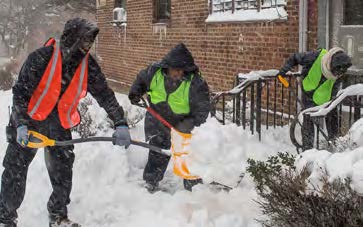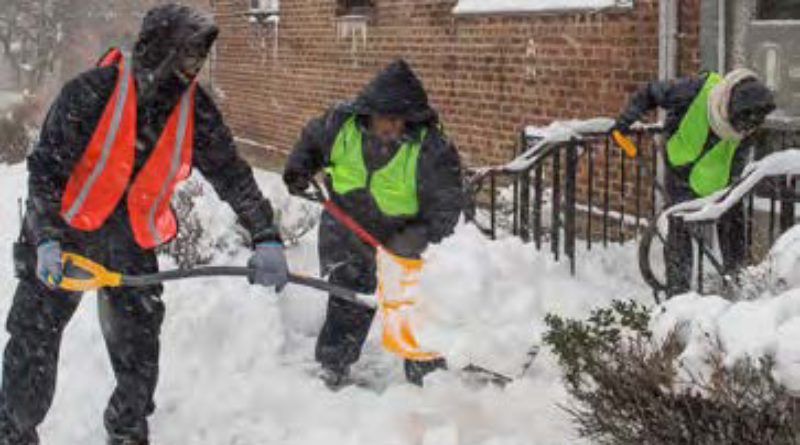Tips for Safe Snow Removal and Protection from the Cold

Since many of us may be on snow removal duty at home or at work this winter, here are some helpful tips for snow removal and for protecting yourself from the cold.
General Safety Precautions
Snow removal can be a strenuous activity, particularly because cold weather can be taxing on the body. There is a potential for exhaustion, dehydration, back injuries, or heart attacks.
To protect yourself, you should always:
- Warm-up before starting: march on the spot, climb stairs or take a walk around the block.
- Wear appropriate boots and clothing for cold, wet and windy conditions. Wear layers that can be adjusted to changing conditions.
- Wear personal protective equipment such as hat, goggles, gloves, and cleats for walking on snow or ice.
- Take frequent breaks in warm areas to warm up.
- Cold weather puts an added strain on the heart so avoid overexertion. Non-routine exercise such as shoveling snow or pushing a vehicle can bring on a heart attack or make other medical conditions worse.
- If you experience pain of any kind, stop immediately and get help.Watch for signs of frost bite and hypothermia.
- When walking on an icy or snow-covered walkway, take short steps and walk at a slower pace so you can react quickly to a change in traction.
For more information, refer to the Snow Removal Operations standard procedure (SP 040:62:1).
Signs of Hypothermia
When exposed to cold temperatures, your body begins to lose heat faster than it can be produced. The result is “hypothermia” or abnormally low body temperature. Body temperature that is too low affects the brain, making the victim unable to think clearly or move well. This makes hypothermia particularly dangerous because a person may not know it’s happening and won’t do anything about it.
Although hypothermia usually occurs at very cold temperatures, it can occur even at cool temperatures above 40 degrees if a person becomes chilled from rain, sweat, or submersion in cold water.
Some of the signs and symptoms of hypothermia are:
- vigorous shivering;
- confusion/fumbling hands;
- memory loss/slurred speech;
- drowsiness or exhaustion;
- slow heart rate or breathing, and
- loss of consciousness.
Signs of Frostbite
At the first signs of redness or pain in any skin area, get out of the cold or protect any exposed skin: Frostbite may be setting in. If you think you’re experiencing hypothermia or frostbite, get immediate medical attention or call 9-1-1.







